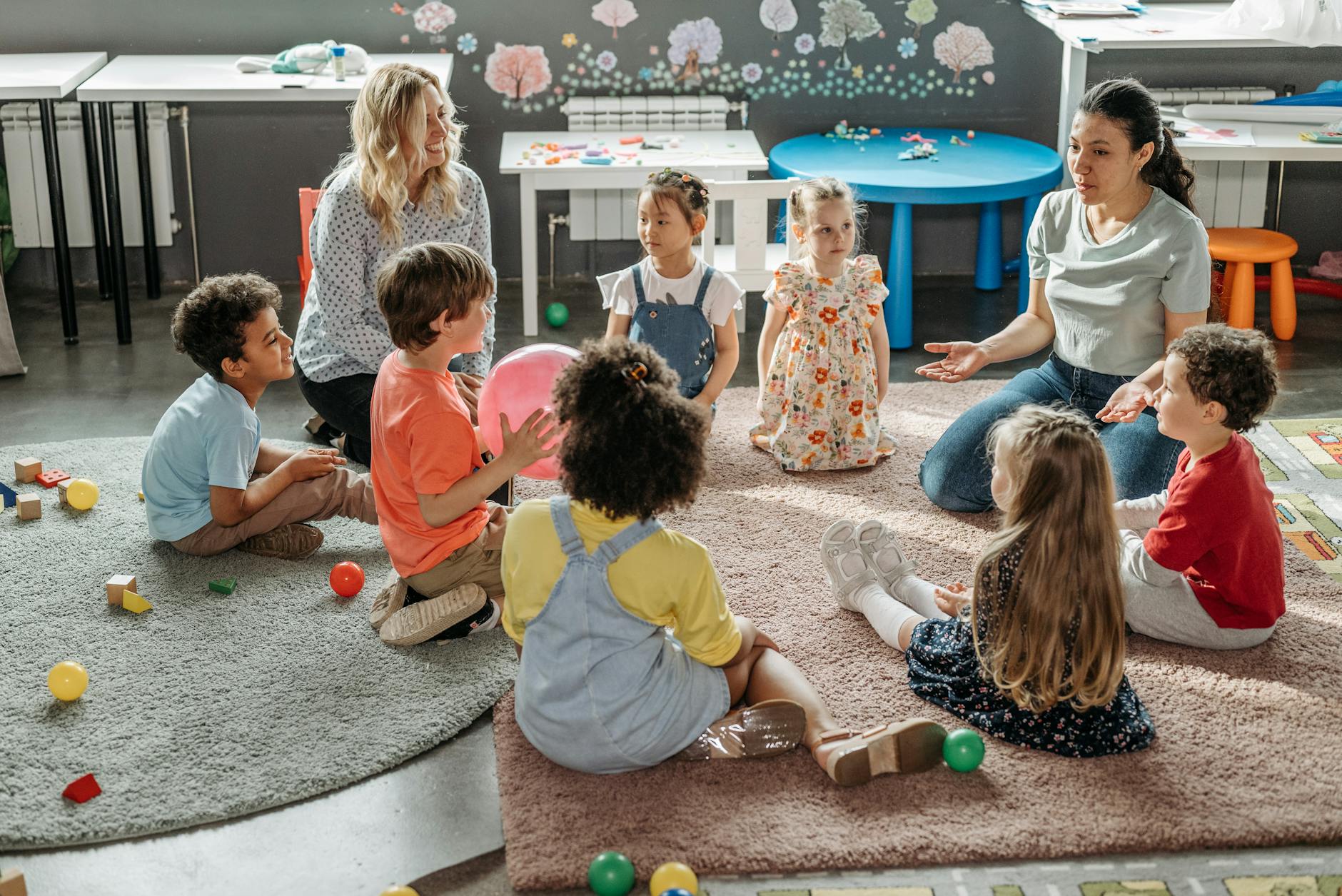Why Child Care Education in Australia Needs a Creative Curriculum Overhaul

Current Curriculum Challenges
Reliance on Traditional Methods
In today's educational environment, there's often an overwhelming dependence on tried-and-true methods that may not foster the dynamic learning experience required by modern students. As a learning experience architect, I understand that many of these traditional approaches may not effectively cater to the diverse and evolving needs of students in mental health courses or community services courses.
Lack of Creativity and Innovation
Curriculum developers sometimes struggle to incorporate innovative techniques that engage students and prepare them for real-world challenges, particularly in childcare courses online. Emphasising technology, much like the showcases at Australian Technology Park, can inspire creativity and problem-solving skills vital for success in these fields.
Disconnect with Children's Needs
A common pitfall in educational settings is neglecting the unique needs and interests of younger learners. The curriculum must be designed with an emphasis on practical engagement, as seen in interactive workshops at the NSW Teachers Federation Conference Centre. By aligning course objectives with student-centric activities, educational professionals can ensure a more meaningful and impactful learning journey.
Overall, by addressing these challenges, educators can foster a more engaging and effective learning environment. This approach opens new avenues for students, equipping them with the skills they need in today's diverse career landscapes.
Benefits of a Creative Curriculum
Encouraging Critical Thinking
Implementing a creative curriculum can revolutionise education by fostering critical thinking. Through engaging and thought-provoking teaching strategies, educators can inspire students to question, evaluate, and create solutions to problems. For example, incorporating early childhood education elements can guide learners to develop questioning techniques and enhance cognitive flexibility. Interactive workshops at the NSW Teachers Federation Conference Centre demonstrate how creative problem-solving skills are crucial in today’s dynamic world of education. These innovative approaches encourage learners to think outside the box while tackling real-world challenges.
Fostering Emotional Intelligence
An emotionally intelligent curriculum empowers students to understand their own feelings and the emotions of others. By incorporating elements of community service training, including aged care courses, educators can introduce scenarios that build empathy and enhance interpersonal skills. Emotional intelligence activities enable students to better navigate social situations, whether in personal relationships or professional environments. The University of Sydney's educational forums often highlight the significance of embedding emotional literacy in the syllabus, which creates more resilient, adaptable students.
Supporting Diverse Learning Styles
A flexible curriculum accommodates diverse learning styles, ensuring that all students have the opportunity to excel. Creative teaching methods, like group projects and multimedia presentations, cater to visual, auditory, and kinesthetic learners alike. Activities that embrace diverse educational techniques, such as technology showcases at the Australian Technology Park, stimulate various cognitive processes and keep students engaged. This inclusivity not only diversifies the educational experience but also cultivates an environment where each student can thrive in their own unique way.
Integrating Tech into Education
In recent years, the fusion of technology with education has become pivotal, particularly in sectors like community services and mental health training. Utilising interactive learning tools can transform traditional educational experiences into dynamic and engaging encounters. For example, educators can use platforms that offer aged care online courses to provide hands-on simulations, offering students a realistic view of scenarios they may encounter in aged care settings.
Interactive Learning Tools
At learning hubs like the University of Sydney's educational forums, educators have access to innovative tools designed to engage learners actively. These tools include virtual reality simulations and interactive modules that cater to diverse learning styles, making tech integration accessible even to those not specifically trained in IT. Such resources can bridge the gap between theory and practical application, especially in fields like aged care, where real-world understanding is crucial.
Facilitating Online Engagement
Engaging students in an online setting requires creativity and thoughtful application of technology. Platforms that support online forums and discussions, such as those seen in aged care training, enable students to collaborate and share insights, mimicking the interactive workshops at the NSW Teachers Federation Conference Centre. This method fosters a community of learners who can discuss complex issues and diverse perspectives in real-time.
Tech as a Creativity Catalyst
Technology serves as a catalyst for creativity, offering new pathways for educators to develop course material that resonates with learners' unique needs. By incorporating technology showcases at the Australian Technology Park, educational professionals can witness firsthand how cutting-edge tech intersects with training methods, enhancing their ability to craft engaging, innovative curricula tailored to evolve with the industry's demands.
Steps to Revolutionise Curriculum
Training for Educators
Incorporating creative teaching methods into community services education begins with well-crafted training for educators. Emphasising professional development through child care courses can enhance educators' understanding of contemporary pedagogical approaches. Focused workshops and seminars can spark creativity and innovation necessary for engaging students in real-world applications. A Diploma of Community Services provides educators with comprehensive insights into industry needs, allowing them to craft courses that resonate with both students and community expectations.
Developing Creative Resources
Crafting a curriculum that captivates and inspires students requires the development of diverse creative resources. Think of interactive modules and simulations that challenge students to solve real-world problems. Drawing inspiration from interactive workshops at venues like the NSW Teachers Federation Conference Centre can guide the creation of these resources. This approach ensures that students interact with material aligning to their career objectives, encouraging deeper engagement and practical understanding.
Involving Community Stakeholders
Successful curriculum overhauls hinge on meaningful involvement from community stakeholders. Incorporating feedback from industry professionals, academic leaders, and local communities ensures the curriculum reflects current needs and trends. It can also lead to valuable partnerships offering students hands-on experiences and networking opportunities. Engaging with the community not only enriches the educational content but also paves the way for students to apply their skills effectively upon entering the workforce.
Common Mistakes to Avoid in Curriculum Overhaul
Avoiding Over-Reliance on Technology
While technology is a powerful tool in education, leaning on it too heavily without integrating it into the broader educational context can be detrimental. It's important to balance digital advancements with tried-and-true techniques. This helps maintain a dynamic and engaging learning environment, akin to what you'd experience at the technology showcases at the Australian Technology Park. By using technology as a complement to traditional methods, we can ensure that students remain engaged and active participants in their own learning journey.
Valuing Educator Feedback
Ignoring educators' insights can stunt the evolution of any curriculum. As mid-career educational professionals, your experiences are crucial for refining teaching methods and course materials. Feedback from interactive workshops at the NSW Teachers Federation Conference Centre highlights the importance of listening to those who are on the front lines of education daily. By fostering open communication channels, we can create a curriculum that truly resonates with both instructors and students.
Ensuring Cultural Relevance
Failing to integrate cultural relevance into educational materials can lead to disengagement and misunderstandings among students. It's vital to incorporate diverse perspectives and experiences that reflect the contemporary Australian society. By drawing inspiration from forums like those at the University of Sydney's educational forums, we can ensure that our curriculum remains inclusive and comprehensive. This holistic approach allows for an educational experience that not only educates but also resonates deeply with students’ personal and cultural identities.


